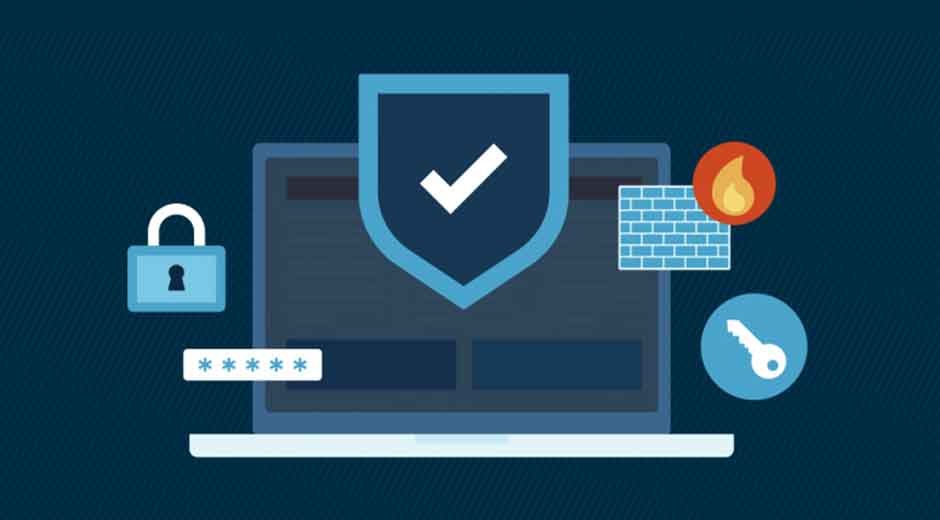Introduction to Endpoint Security
In today’s digitally driven world, endpoint security is a cornerstone of any organization’s cybersecurity strategy. But what exactly does it entail? At its core, endpoint security safeguards end-user devices such as laptops, desktops, and mobile gadgets from malicious attacks. These devices, called endpoints in cybersecurity, represent the entry point for potential threats into an organization’s network. As the realm of cyber threats progresses, it is increasingly vital to comprehend and apply robust endpoint security strategies. This initiative involves several tiers of protection aimed at securing sensitive information from unauthorized access and a range of cyber threats.
Why Endpoint Security Matters
The significance of endpoint security extends beyond the mere protection of individual devices; it serves as a shield for the entire network infrastructure. The risks associated with unprotected endpoints are significant in an era marked by the rise of advanced cyber threats. Now more than ever, organizations are confronted with the challenges brought forth by remote workforces and bring-your-own-device (BYOD) policies, which inherently broaden the attack surface and increase vulnerability. Robust endpoint security is critical in ensuring that sensitive data remains secure, minimizing the potential for disruptive and costly data breaches. Notably, data from IBM indicates that the average cost of a data breach has surpassed $4 million, underlining the necessity for proactive measures.
Best Practices for a Robust Endpoint Security Strategy
Adopting a robust endpoint security strategy requires technology, policies, and employee awareness to effectively secure every access point within an organization. Here are some key practices to consider:
- Regular Software Updates:Ensure all software and applications are up-to-date to patch any vulnerabilities. This practice prevents attackers from exploiting known flaws in outdated systems.
- Employee Training:Cybersecurity awareness is a critical component of endpoint security. Organizations empower their employees to act as the first line of defense against potential attacks by educating staff on recognizing phishing attempts and other common cyber threats.
- Automated Security Tools:Leverage automated tools for threat detection and response to minimize human error. These tools analyze real-time network traffic and endpoint behaviors, responding rapidly to potential threats.
- Use of VPNs:Encourage remote workers to use Virtual Private Networks (VPNs) to secure their connections, especially when accessing sensitive company information from unsecured networks.
Integrating these practices into a comprehensive security strategy can enhance an organization’s resilience against the growing spectrum of cyber threats.
Emerging Trends in Endpoint Security
The field of endpoint security is continuously advancing, driven by the need to adapt to new threats and technological changes. Several notable trends are transforming how organizations approach endpoint protection:
- Cloud-Native Security Solutions:These solutions are gaining traction due to their scalability, flexibility, and ability to integrate seamlessly with modern IT infrastructures. By utilizing cloud services, organizations can implement security measures without requiring extensive hardware investments, offering a more efficient and cost-effective approach to protection.
- Mobile Device Protection:As mobile devices become integral to business operations, ensuring their security has become paramount. Mobile Device Management (MDM) solutions are increasingly adopted to manage and secure endpoint devices, ensuring company policies are upheld across all mobile platforms.
- Zero Trust Architecture:This approach is emerging as a dominant paradigm. It ensures that every access attempt is authenticated and authorized, regardless of whether it originates from within the network or externally. Zero trust assumes that threats could be present inside the network and implements strict access controls and verification processes to protect sensitive resources.
These trends offer improved security and enhance operational efficiency and cost-effectiveness, allowing businesses to navigate the complexities of modern digital threats with greater confidence.
Role of Artificial Intelligence in Endpoint Protection
Artificial Intelligence (AI) and machine learning are revolutionizing cybersecurity, particularly endpoint protection. Through AI, organizations can anticipate and address threats more efficiently, improving their overall security framework. Sophisticated AI algorithms process extensive datasets to recognize patterns and identify anomalies in real-time, significantly augmenting threat detection and response abilities. This functionality is crucial when the number of potential threats and alerts can be daunting for conventional security systems.
AI-powered solutions can automate numerous facets of cybersecurity, thereby diminishing the necessity for human involvement and enabling security teams to concentrate on more strategic initiatives. For example, AI can automate identifying and mitigating threats, streamline the investigation process, and even predict future attack vectors. Such advancements increase the speed and efficiency of threat response and improve the accuracy of threat detection, ensuring a more robust defense against cyber adversaries.
Common Challenges and How to Overcome Them
While endpoint security offers substantial benefits, it has its challenges. Companies face several hurdles in maintaining adequate endpoint protection:
- Diverse Device Management:Managing a diverse array of devices and ensuring consistent security protocols across all endpoints can be complex, especially in environments that utilize various operating systems and device types. To overcome this, organizations should implement unified management solutions that provide centralized visibility and control over their endpoint infrastructures.
- The Human Factor:Often, the most significant vulnerability lies not in the technology but in human error or negligence. Extensive training initiatives that promote a culture of security awareness and enable employees to engage responsibly with digital assets can alleviate this issue.
The Future of Endpoint Security
Looking ahead, several impactful innovations are poised to shape the future of endpoint security. As cyber threats become more sophisticated, security solutions must evolve accordingly. Anticipate an increased integration of AI and machine learning technologies, which promise to enhance detection capabilities and automate threat response processes.
Furthermore, zero-trust architectures are likely to become more prevalent. These architectures enforce strict access controls and continuous verification protocols to mitigate potential risks. This approach will safeguard sensitive resources and maintain trust within digital ecosystems.
As the Internet of Things (IoT) expands, the proliferation of connected devices will introduce new security considerations. Innovative solutions tailored to IoT devices’ unique characteristics and vulnerabilities will be crucial in maintaining a secure environment.
These advances offer better protection while adapting to the ever-changing digital landscape, ensuring organizations can confidently navigate the complexities of modern cybersecurity challenges.






